The Darug Aboriginal People (were known as the Broken Bay tribe)
The Darug Aboriginal people have lived on the lands around Penrith for thousands of years as mobile hunter-gathers.
Evidence for the long occupation by the Darug people can be found in the Penrith-Castlereagh area close to the Nepean River, where stone artefacts have been found under silt and sand.
The name "Darug" comes from the Aboriginal word for "yam", which was an important part of the Aboriginal diet. Aboriginal women harvested and prepared the yams which grew along the Nepean River.
The inland Darug were paiendra or "tomahawk people". They hunted kangaroos, emus and other land animals and used stone axes.
Not long after the First Fleet arrived at Sydney Cove in 1789, an officer of marines Captain Watkin Tench, led an expedition to the Nepean River. On that expedition, Tench noted that:
"Traces of the natives appeared at every step, sometimes in their hunting huts which consist of nothing more than a large piece of bark bent in the middle and opened at both ends, exactly resembling two cards set up to form an acute angle; sometimes in marks on trees which they had climbed; or in squirrel-traps....We also met with two old damaged canoes hauled up on the beach" (Tench 1789).
The Hawkesbury and Nepean Wars (1794–1816)
Governor Phillip and Evan Nepean
On 27 June 1789, Captain Watkin Tench and his party came across the Nepean River. The river was named by Governor Arthur Phillip for Evan Nepean, the Under Secretary of State at the Home Office. (Nepean is also an ancestor of actor Hugh Grant).
The first land grant in the region was made by Governor Macquarie to Lieutenant William Cox, a colonial magistrate. Fernhill House was built in the late 1830s.
William Cox was appointed by Governor Macquarie to build a road over the mountains (1814-15) and to supervise the 1815 Parramatta to Penrith road.
Emu Plains became a convict settlement in 1819 in the Governor Macquarie era. The convicts cleared land and carried out agriculture for 13 years. Convict barracks were located near Victoria Bridge, but due to floods, Governor Macquarie ordered their removal to higher ground in 1812.
A French Visit
Artist Alphonse Pellion, part of a French expedition led by Louis de Freycinet, was in Sydney in November 1819. Meeting two Aboriginal men, Tara and Peroa, near the Nepean River, Pellion made a sketch of them. Depictions of Aboriginal men wearing jackets or coats without trousers was common in this period. It can be viewed here
Alphonse Pellion's sketches were later used, to make an engraved composite, showing Nepean men, Jedat, Tara and Nemare, from the waist up.
"We cannot help admiring with what
facility the ford at Emu is now crossed. The
passage over is comparatively quick and quite
safe. Till within the last few months a large
boat was the only conveyance, which every
one knows is both tedious and dangerous.
But now there is a commodious and strong
punt built, which may be considered, next to
an actual bridge for security and accommodation."
The second hotel at Penrith was a two-storey, convict-built inn constructed about 1827. Initially, the inn was called William IV. Later the name was changed to the Pineapple Inn. But when Charles Darwin stayed there in 1836, he called it the inn at Emu Ferry.
The Rose Inn
"In the early days bushrangers from the moun-
tains committed occasional robberies around
the district, and it was a fairly common sight
to see bodies of townsfolk, "armed to the
teeth," as one old resident puts it, setting out
from Penrith to escort the mail coach over the
worst portion of the range."
1920s
In 1923 GA Bond & Co grew Australia’s first cotton crop on 70 acres on the corner of Castlereagh Road and Church Lane.
1930s
The Australian economy collapsed and unemployment reached a peak of 32 per cent in 1932.
Not long after the First Fleet arrived at Sydney Cove in 1789, an officer of marines Captain Watkin Tench, led an expedition to the Nepean River. On that expedition, Tench noted that:
"Traces of the natives appeared at every step, sometimes in their hunting huts which consist of nothing more than a large piece of bark bent in the middle and opened at both ends, exactly resembling two cards set up to form an acute angle; sometimes in marks on trees which they had climbed; or in squirrel-traps....We also met with two old damaged canoes hauled up on the beach" (Tench 1789).
At Cranebrook Terrace near Penrith, five "flaked residential deve pebbles" identified as stone tools were found in the area (evidence of long Aboriginal occupation).
Most of the Aboriginal rock art in the region has been found in the Upper Nepean area (Cataract). An emu motif and 12 axe-grinding grooves have been found at one site. Red Hands Cave at nearby Glenbrook was painted between 500 and 1600 years ago. See here
A British anthropologist in 1926, Professor Alfred Radcliffe-Brown, observed that most Aboriginal groups shared the belief in a creator being, typically a dangerous snake or serpent closely associated with the rainbows, rain, rivers, and deep waterholes. This being, which has many different names, he called the "Rainbow Serpent".
Interestingly, the word "Corroboree" comes from the Darug language, as do koala, dingo, cooee and waratah. Lieutenant William Dawes, a British officer on the First Fleet, was the first person to record conversations and the meanings of words in the Dharug language.
The Hawkesbury and Nepean Wars (1794–1816)
 |
| Warriors of NSW, 1813, J.H. Clark del.; M. Dubourg sculpt |
According to the historian Henry Reynolds, there was intensive conflict between the British settlers in the Hawkesbury and Nepean districts in the early years of the arrival of the British.
This frontier conflict and Aboriginal resistance, according to Reynolds, “was widespread and persistent."
Other historians, such as Jan Barkley-Jack, who reviewed the available evidence from the early colonial era, dispute the characterisation of the frontier conflict as "war."
However, it is clear that despite the evident resistance, the Hawkesbury and Nepean Aboriginal people were dispossessed of their lands.
Aboriginal raids occurred along the Nepean River in the first four months of 1816 and were part of a series of ongoing raids in the Nepean area since 1814.
 |
| Sydney Gazette and New South Wales Advertiser (NSW : 1803 - 1842), Saturday 4 May 1816 (here) |
Governor Phillip and Evan Nepean
On 27 June 1789, Captain Watkin Tench and his party came across the Nepean River. The river was named by Governor Arthur Phillip for Evan Nepean, the Under Secretary of State at the Home Office. (Nepean is also an ancestor of actor Hugh Grant).
Before being named Penrith, the area was called Evan on early maps.
| Sir Evan Nepean (1751-1822) |
Land Grants
William Cox
Reverend Samuel Marsden
Mamre House, located in Orchard Hills, the City of Penrith, sits on the original land grant of Reverend Samuel Marsden, established in 1804. Mamre Homestead was built c1820s.
 |
| THE REV. SAMUEL MARSDEN; DIED 1838 |
 |
| Mamre Homestead was built c1820s. Orchard Hills, City of Penrith, NSW, Sydney Mail (NSW : 1912 - 1938), Wednesday 1 June 1927 |
Captain Daniel Woodriff
Captain Daniel Woodriff was granted land by Governor King in 1804. Woodriff's descendants built “Combewood”, a Queen Anne style house in 1890. Unfortunately, this historic house is today surrounded by dense industrial development.
Captain Woodriff's brother, Frederick Daniel Woodriff, built his house "Rodley” on Mulgoa Road. This house appears to have been demolished to build appartments.
 |
| Captain Daniel Woodriff |
 |
| Combewood House, located on Coreen Avenue, Penrith. The house, completed in 1890, was originally on 500 acres of land. It was built by Francis Daniel, grandson of Captain Daniel Woodriff |
Sir John Jamison
On 22 May, 1869, Regentville burnt down, it was concluded, by arson.
John Jamison was born in Carrickfergus, County Antrim, Ireland, in 1776. He arrived in New South Wales with the First Fleet in 1788 aboard HMS Sirius.
In 1818 John Jamieson and a party set off to investigate the relationship between the Nepean and Cox’s Rivers. Included in this party was a Darug man called Gilderoy (also called Bob). However, the boat was damaged.
Jamieson organised another party, led by Thomas Jones, which included Darug men Gilderoy, Millot (Joe) and Nagga (Jack), to trace the Cox’s River from Hartley.
After inheriting a large area of land, Which he called "Regentville", located east of the Nepean River, John Jamison built a large, two-storey mansion. In 1824 William Houghton described the property:
After inheriting a large area of land, Which he called "Regentville", located east of the Nepean River, John Jamison built a large, two-storey mansion. In 1824 William Houghton described the property:
“Sir John Jamison, who resides on his estate opposite Emu Plains, took me to see his new house. It stands on the top of a long, gentle ascent and is certainly a noble mansion".
The mansion was indeed grand, with 15 rooms, including a billiard room, a library and nine bedrooms. And the property boasted vineyards, an irrigation scheme and a woollen mill built about 1842. This mill gave Henry Parkes his first job in Australia. Sir John also owned a race-course at Penrith.
Sir John Jamison died at Regentville in 1844 at the age of 68.
John Tindale had a key role in the development of Penrith, with buildings such as the Rose Inn and others. In May 1824, he bought Mr Best’s property and began building “Hornseywood” homestead, located on the Western Road (High Street) at Penrith. (The house was later converted into an Irish Castle known locally as The Towers).
Convicts
Emu Plains became a convict settlement in 1819 in the Governor Macquarie era. The convicts cleared land and carried out agriculture for 13 years. Convict barracks were located near Victoria Bridge, but due to floods, Governor Macquarie ordered their removal to higher ground in 1812.
A French Visit
Artist Alphonse Pellion, part of a French expedition led by Louis de Freycinet, was in Sydney in November 1819. Meeting two Aboriginal men, Tara and Peroa, near the Nepean River, Pellion made a sketch of them. Depictions of Aboriginal men wearing jackets or coats without trousers was common in this period. It can be viewed here
 |
| 'Nouvelle-Holland, Port Jackson, Sauvages des environs de la Riviere Nepean', print, based on sketches by Alphonse Peron, Paris c1822. Source: Mitchell Library, State Library of New South Wales |
Building Bridges
On January 1, 1856, the first bridge was built over the Nepean River. However, in August of that year, a flood washed the wooden bridge away. The bridge was then rebuilt in 1860, and the bridge again washed away. For the next six or seven years, the Nepean River was crossed by a punt service.
One of the earliest references to the punt service at Emu Ford, as the crossing place on the Nepean River was called, was September 1823, in the Sydney Gazette:
On January 1, 1856, the first bridge was built over the Nepean River. However, in August of that year, a flood washed the wooden bridge away. The bridge was then rebuilt in 1860, and the bridge again washed away. For the next six or seven years, the Nepean River was crossed by a punt service.
One of the earliest references to the punt service at Emu Ford, as the crossing place on the Nepean River was called, was September 1823, in the Sydney Gazette:
facility the ford at Emu is now crossed. The
passage over is comparatively quick and quite
safe. Till within the last few months a large
boat was the only conveyance, which every
one knows is both tedious and dangerous.
But now there is a commodious and strong
punt built, which may be considered, next to
an actual bridge for security and accommodation."
Sun (Sydney, NSW : 1910 - 1954), Wednesday 30 April 1913
The First Hotel
 |
| Bridge over the Nepean River, NSW, Dated: c. 1867. NSW State Archives |
The First Hotel
Depot Inn
The first hotel in Penrith was probably the "Depot Inn" located next to the Courthouse. It was operated by Sergeant Bayliss of the N.S.W. Corp, in a house set back from the street, with a mulberry tree in the garden. Later the hotel was renamed the King's Head by John Moses. However, the building and the surrounding land was owned by Sarah McHenry, widow of John McHenry, who had received the land as a government grant.
The first hotel in Penrith was probably the "Depot Inn" located next to the Courthouse. It was operated by Sergeant Bayliss of the N.S.W. Corp, in a house set back from the street, with a mulberry tree in the garden. Later the hotel was renamed the King's Head by John Moses. However, the building and the surrounding land was owned by Sarah McHenry, widow of John McHenry, who had received the land as a government grant.
Emu Ferry
The second hotel at Penrith was a two-storey, convict-built inn constructed about 1827. Initially, the inn was called William IV. Later the name was changed to the Pineapple Inn. But when Charles Darwin stayed there in 1836, he called it the inn at Emu Ferry.
Later the name of the inn was changed to Governor Bourke. The inn closed in 1889, and it became staff accommodation for the Log Cabin Hotel. This hotel was demolished and The Teahouse was built in 1925. Confusingly, the name of the hotel was changed to the Log Cabin Hotel (burnt down 2012).
There is now a new Log Cabin Hotel on the site.
 |
| This two-storey convict built Inn which was one of the earliest and best known in the district, began life in 1827 as the Emu Ferry Inn or Wilson’s Hotel. Blue Mountains Library |
 |
| Explorers' Memorial and the Governor Burke Inn, Blue Mountains City Library |
.jpg) |
| The Log Cabin Hotel - Penrith, burnt by fire in 2012 and demolished |
The Rose Inn, constructed from 1833-1834, was built by John Tindale in High Street. It had pictures of Dick Turpin's ride to York on the dining room walls. John Tindale built a house called "Hornseywood" on High Street, Penrith in the early 1830s.
The house was later converted by Dr Barber, sometime before 1892, who inspired by an Irish castle, built a facade with false windows on the building, which made the house appear two storeys. The building was called Tullaghmurry by the Barber's and The Towers by the locals.
 |
| Drawing of the building known as the Towers, Penrith NSW (demolished in 1940s for Penrith High School) Mr Tindale also built some shops, which were locally known as Rotton Row. Mr Parry ran a coach service to Bathurst. However, Parry's three-wheel coach was very uncomfortable and he received many complaints. |
 |
| Old Settler's cottage, Penrith. State Library of New South Wales |
In Days of Old
On the corner of Lawson and High Streets in 1836, Lawson's Pub stood, with part of the building used as a butcher shop by Mrs McHenry.
Watson, of Parramatta, ran a small coach to Penrith, called the "Tickler", In 1840.
tains committed occasional robberies around
the district, and it was a fairly common sight
to see bodies of townsfolk, "armed to the
teeth," as one old resident puts it, setting out
from Penrith to escort the mail coach over the
worst portion of the range."
The Sydney Morning Herald (NSW : 1842 - 1954) 1914
Penrith Council’s first Free Public Library opened in the School of Arts in 1848.
The Red Cow Inn at Station Street was built in 1862 by Thomas Smith. Mr Bronger owned the Commercial Hotel in Station Street, and Armstrong's Brewery once stood in High Street.
Until the 1920s, the Royal Hotel stood on the corner of Henry and Commercial Streets. The license was transferred to the Lapstone Hotel, where the RAAF is now situated, near Glenbrook.
Some of the early shops at Penrith were the butcher, Mr Dempsey, Coleman's store and Harrington's shop.
During the 1830s, the Royal Mail left Sydney every Monday and Thursday at 4 pm and would arrive back from Penrith the following morning at 10 am. The postmaster at Penrith was Alex Fraser. Michael Long, who was born at Penrith in 1888, was Mayor of Penrith 9 times.
During the gold rush in the Bathurst region during the 1850s, many hopeful people travelled through Penrith toward the west. Coaches, wagons, people pushing wheelbarrows and handcarts would make their way through the region, perhaps stopping at Emu Ferry or The Arms of Australia at Emu Plains.
The first Council Chambers was erected on the corner of Henry & Evan Streets, in 1881. |
| "Winbourne", near Penrith, N.S.W.1880-ca. 1934]. Out of Copyright, Was the home of George Cox who married Elizabeth Bell. |
 |
| The Towers, High Street, Penrith, NSW. Built from 1880s. Demolished 1940, today the land is home to Penrith High School. |
 |
| Nepean River boat tours in the 1890s, Penrith, NSW |
Reminiscences
In an article in the Nepean Times in 1914, pioneers of the Penrith area reminisced about days of old. A Mrs Robbins remembered the convicts going to work in their striped yellow and black prison uniform. Some of these convicts were guarded by soldiers with bayonets or wore leg-irons.
In an article in the Nepean Times in 1914, pioneers of the Penrith area reminisced about days of old. A Mrs Robbins remembered the convicts going to work in their striped yellow and black prison uniform. Some of these convicts were guarded by soldiers with bayonets or wore leg-irons.
Mrs Robbins said that she used to shudder as a girl when she heard the screams of a convict being whipped by the cat-of-nine-tails. Jack the Flogger would administer the 50 or 100 lashes of punishment. But he kept close to Chief Constable Proctor's quarters, as he and other floggers often met early deaths themselves from the vengeance of escaped convicts.
Another pioneer, Mrs Dowling, spoke of the floods at Penrith and the time that nine families drowned in Castlereagh Street. And how the only shops at Penrith were those of Coulter and Burns, Smeaton's boot-shop in High Street, and W. Matthew's store on the corner of High and Castlereagh Streets.
A Mrs Barlow recalls how there were only two houses at Penrith in her youth. The house of her family and another by the riverbank, which became a public house owned by Mr Wilson. Mrs Barlow's father was a constable and he was ably assisted by Woolloboi, an Aboriginal tracker. Mrs Barlow also recalled seeing The Flying Pieman, William Francis King, who once ran a race against the Royal Mail coach from Sydney to Parramatta.
 |
| The Flying Pieman in his old age, (who once ran a race against the Royal Mail coach from Sydney to Parramatta) Telegraph (Brisbane, Qld. : 1872 - 1947), Friday 9 March 1928 |
Other memories of Mrs Barlow are that:
"she witnessed several corrobborees, and the blacks had a 'bora ' (or sacred ground) on, or near "Wilson's Flat," hard by the river. There the youths of the tribes were "tranformed" into full-fledged braves by knocking out of one of the front teeth, etc. The most remarkable of those aborigines were "Wool-loboi," "Black Stevey" and "Nellie"—a muscular "lubra" (woman), a photo of whom was shown to our scribe by Mrs Barlow."
"she witnessed several corrobborees, and the blacks had a 'bora ' (or sacred ground) on, or near "Wilson's Flat," hard by the river. There the youths of the tribes were "tranformed" into full-fledged braves by knocking out of one of the front teeth, etc. The most remarkable of those aborigines were "Wool-loboi," "Black Stevey" and "Nellie"—a muscular "lubra" (woman), a photo of whom was shown to our scribe by Mrs Barlow."
In 1890, Penrith became the first town in the Sydney Region to connect to electricity.
 |
| PENRITH BRANCH RAILWAY AND TRAMWAY AMBULANCE CORPS. NSW, Australian Town and Country Journal (Sydney, NSW : 1870 - 1919), Saturday 22 July 1899 |
1900s
 |
| Penrith Locomotive Depot, NSW, - showing workers and locomotive, Dated: c. 01/01/1900, NSW State Archives |
 |
| Nepean Times (Penrith, NSW : 1882 - 1962), Saturday 1 December 1900 |
 |
| The original Nepean Cottage Hospital was was erected in the 1840s in Henry Street. The Glebe Place Nepean Cottage Hospital was completed in 1895. Two significant additions were made to the hospital in 1904, with the completion of an operating theatre, and in a 1910, the construction of an isolation ward. 64 Glebe Place, Penrith, NSW, Australian Town and Country Journal (Sydney, NSW : 1870 - 1919), Wednesday 7 June 1905 |
 |
| Albert John Young "Bert" Hopkins (3 May 1874 – 25 April 1931) was an Australian cricketer and Penrith bee-farmer who played in 20 Tests between 1902 and 1909. POSTCARD c1905, Kaye |
 |
| Old Inn on Castlereagh Road, built 1828 (taken 30 September 1906) Copyright expired |
 |
| Boy scouts camp on the Nepean River, Penrith, NSW, Nepean Times (Penrith, NSW : 1882 - 1962), Saturday 15 January 1910 |
 |
| Penrith, NSW, early 1900s |
 |
| Railway Station - Penrith, NSW, 1911, locomotive decorated for the coronation of King George V, (1865 - 1936) NSW State Archives |
 |
| Western Road Centenary, Penrith, NSW, Daily Telegraph (Sydney, NSW : 1883 - 1930), Monday 20 July 1914 |
WWI
1920s
 |
| St, Stephen's Church, Penrith, NSW, Nepean Times (Penrith, NSW : 1882 - 1962), Saturday 23 December 1922 |
 |
| Sydney Mail (NSW : 1912 - 1938), Wednesday 21 March 1923 |
 |
| Racing cars, Penrith Speedway, 1925 : (from camera) 1914 Vauxhall of R.McKellar; Bugatti of H.Bartlett; Diatto of Smith; Ford T of Twomey; Lexington of Cohen and Mercedes of Jacobs, SLNSW |
 |
| The Duke and Duchess at Penrith was typical of the tumultuous enthusiasm that marked the progress of the Royal train throughout .Sydney Mail (NSW : 1912 - 1938), Wednesday 6 April 1927 |
 |
| Nepean Times (Penrith, NSW : 1882 - 1962), Saturday 29 October 1927 |
 |
| The Victoria Bridge over Nepean River, Penrith, circa 1900-1927 |
 |
| Sydney Morning Herald (NSW : 1842 - 1954), Tuesday 23 July 1929 |
1930s
Glenleigh Estate a heritage-listed building located on Mulgoa Road in the suburb of Regentville in the City of Penrith was purchased by Charles Smith and leased to a church mission to house Aboriginal children.
 |
| Great Western Road - Penrith NSW - Prior to reconstruction, 1930. State Archives |
 |
| At Penrith, NSW, where jobless ex-naval- men have formed a settlement, Daily Telegraph (Sydney, NSW : 1931 - 1954), Saturday 20 February 1932 |
 |
| Penrith, NSW, 1935 |
 |
| Alderman Jenkins opens new ambulance station at Penrith, 28 November 1936 |
 |
| Mobilubrication pit, Penrith, c. 1930s, by Sam Hood, State Library of New South Wales |
1940s and WWII
At the end of World War II, the outer Western Sydney suburb of Penrith had a population of only 15,000 and in 2016, there were 196,066 people in the Penrith local government area.
Mulgoa Mission housed Aboriginal children who had been evacuated from the north during WWII.
1970s
1980s
 |
| High Street Penrith looking East from Station St, circa 1940, NSW |
 |
| Great Western Road - Penrith, NSW, 31 Dec 1946, State Archives |
 |
| Great Western Highway - High St Penrith after reconstruction. From Dunmore St looking East. State Archives, 1946 |
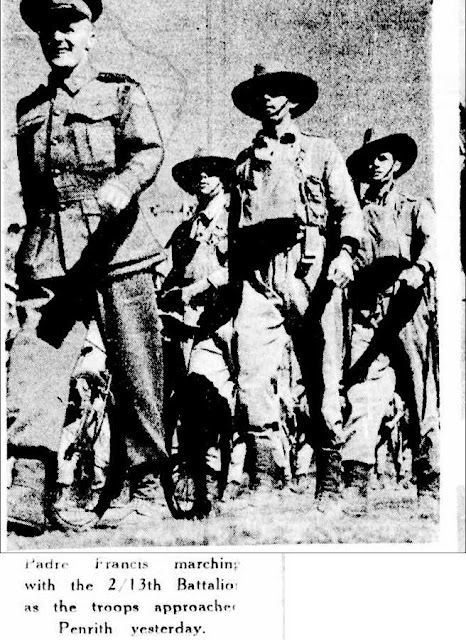 |
| The 2/13 th Battalion which is marching from Ingleburn to Bathurst in a ceremonial match through the streets of Penrith NSW, Sydney Morning Herald (NSW : 1842 - 1954), Wednesday 14 August 1940 |
 |
| Daily Telegraph (Sydney, NSW : 1931 - 1954), Tuesday 13 August 1940 |
Mulgoa Mission housed Aboriginal children who had been evacuated from the north during WWII.
 |
| Aboriginal young people from the Mulgoa Mission near Penrith passing through Melbourne on the way to Alice Springs, West Australian (Perth, WA : 1879 - 1954), Saturday 29 January 1949 |
 |
| Cricket enthusiast Wilfred Huddleston from Mulgoa Mission, NSW, Australian Women's Weekly (1933 - 1982), Saturday 12 February 1949 |
 |
| Bussell Brothers shop front, High Street, Penrith by Max Dupain, 1948 | State Library of NSW |
 |
| Shoe Shop, Penrith, NSW, by Max Dupain, 1948. State Library of NSW |
 |
| High street, Penrith NSW by Max Dupain, 1948. State Library of NSW |
 |
| Aroney's Milk Bar, High Street, Penrith NSW by Max Dupain, 1948. State Library of NSW |
1950s
 |
| Penrith CWA, Farmer and Settler (Sydney, NSW : 1906 - 1955), Friday 22 September 1950 |
 |
| G.P.S. [Great Public Schools] Regatta on the Nepean River, Penrith (NSW) About 1940-50s, NSW State Archives |
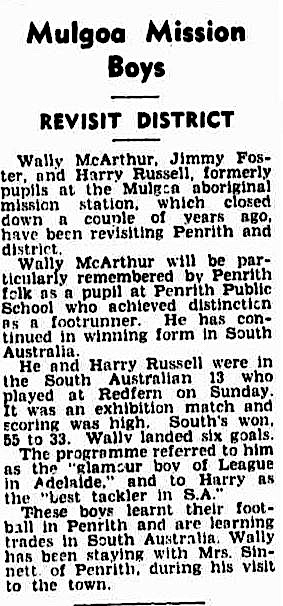 |
| Nepean Times (Penrith, NSW : 1882 - 1962), Thursday 19 July 1951 |
 |
| In the 1920s the Nepean Dairy Company was established and a milk factory was built close to the railway line in Penrith. Farmer and Settler (Sydney, NSW : 1906 - 1955), Friday 27 May 1955 |
1960s
 |
| High St, Penrith, NSW, circa 1960. NSW State Archives |
1970s
 |
| High Street Penrith seen through the windscreen of a Ford XT Falcon around 1970. The car in front is a 1966/7 VC Valiant and it is seen displaying New South Wales registration plate No. '1'. sv1ambo |
1980s
Around Penrith
Heritage Drive Brochure
St_Aubyns_Terrace_High_Street_Penrith.jpg) |
| St Aubyn's Terrace, High St, Penrith |
Italianate_building_High_Street_Penrith.jpg) |
| Morris House, Italianate building, High Street, Penrith |
Red_Cow_Hotel_Penrith.jpg) |
| Red Cow Hotel, Penrith’s oldest-standing pub —built about 1863, NSW |
.jpg) |
| Former Methodist Church, located on Henry Street. Built 1861. Now a restaurant. |
 |
| Thornton Hall, built in 1870 by Thomas Smith, an alderman on Penrith's first municipal council. |
 |
| Heritage house, Lemongrove Road, Penrith, NSW |
 |
| Former station master's house, Penrith, NSW |
 |
| Heritage house, Castlereagh Street, Penrith, NSW |
 |
| Heritage house, Penrith, NSW |
 |
| Heritage houses, Penrith, NSW |
 |
| Heritage houses, Penrith, NSW |
 |
| Victorian heritage house, Penrith, NSW |
 |
| Heritage house, Penrith, NSW |
 |
| Heritage house, Penrith, NSW |
 |
| Heritage house, Penrith, NSW |
 |
| At the Museum of Fire, Penrith, NSW sv1ambo |
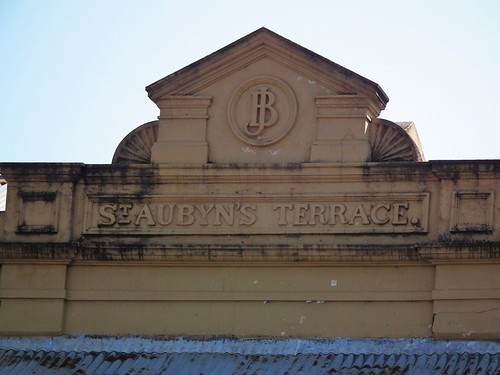 |
| St Aubyn's Terrace - Penrith, New South Wales. Row of six three story terraces built around 1890. Located on High St, built by John Brown of Emu Hall sv1ambo |
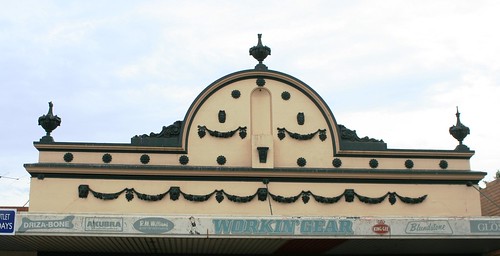 |
| Top of shop, Penrith, NSW. OZinOH |
 |
| Derby Street, Penrith, NSW |
 |
| St Stephen the Martyr graveyard cemetery is situated behind the Church (High Street) on Fulton Lane, Penrith, NSW |
Things To Do and Places To Go
Heritage Drive Brochure


.jpg)

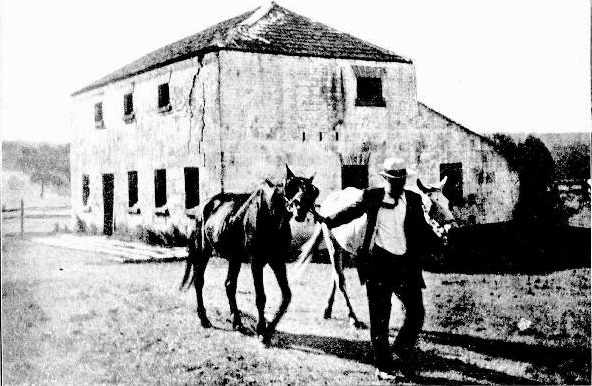




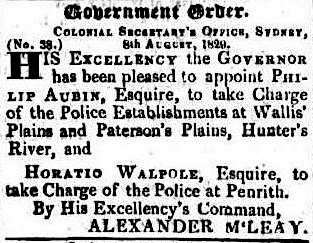
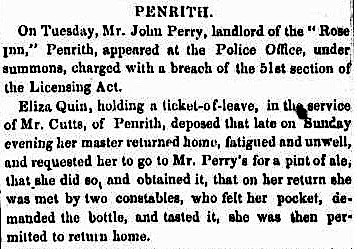

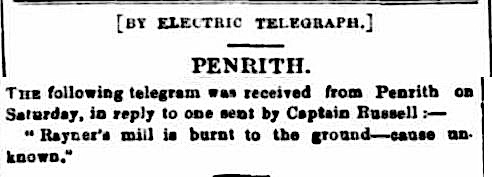






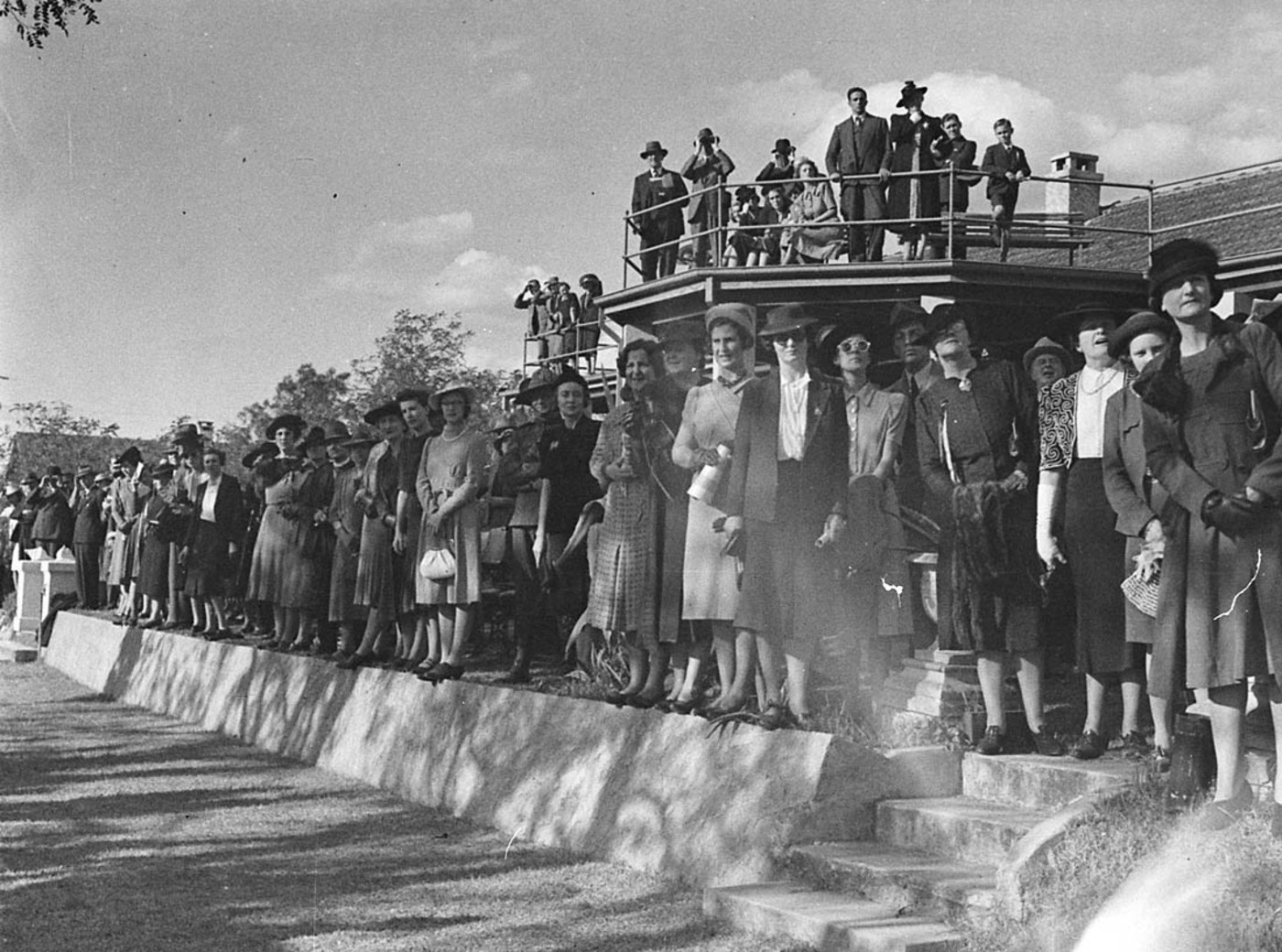






St_Stephens_Anglican_Church_Penrith_024.jpg)